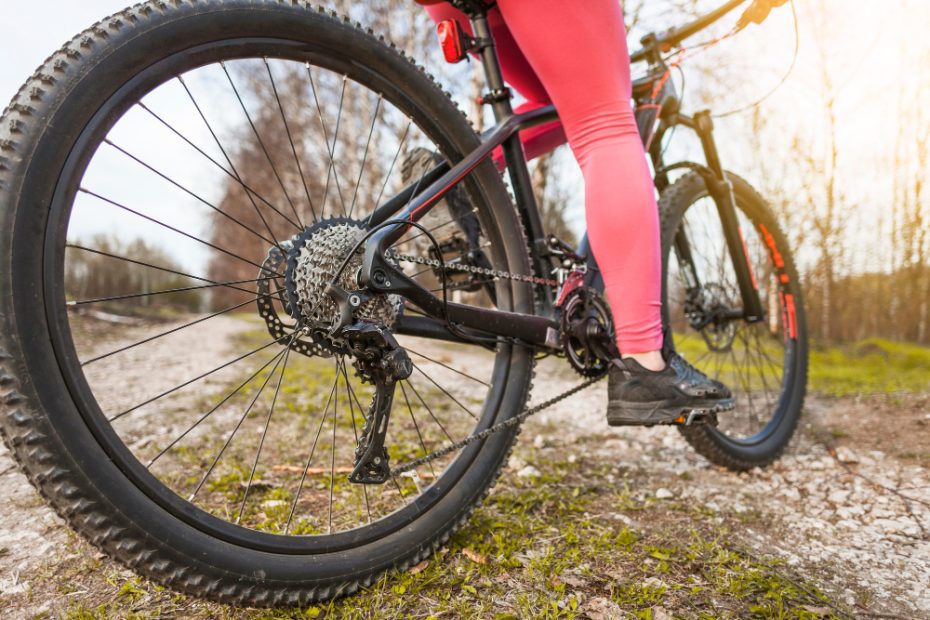How can I improve my road bike handling skills?
Improving your road bike handling skills is essential for becoming a better and safer cyclist. Whether you are a beginner or an experienced rider, honing your bike handling abilities can help you navigate through challenging terrains, handle unexpected situations, and enhance your overall riding experience.
The Importance of Road Bike Handling Skills
Handling a road bike effectively requires a combination of balance, coordination, and technique. By improving your handling skills, you will be able to:
- Navigate sharp turns confidently and safely.
- Respond quickly to obstacles, such as potholes or debris on the road.
- Improve your bike control in various weather conditions.
- Enhance your ability to ride in close proximity to other cyclists.
Better road bike handling skills also contribute to your overall performance on the bike. Efficient cornering, braking, and descending techniques can help you conserve energy and maintain a consistent pace during rides.
Tips to Improve Your Road Bike Handling Skills
1. Practice Bike Handling Drills
Regularly practicing specific drills can significantly improve your handling skills. Some drills you can try include:
- Slow-speed maneuvering: Set up a small course with cones or markers and practice riding slowly while maintaining balance and control.
- Cornering practice: Find an open area with turns and practice entering and exiting corners smoothly, gradually increasing your speed as your confidence improves.
- Obstacle avoidance: Set up obstacles such as cones or water bottles and practice swerving around them at various speeds.
Regularly incorporating these drills into your training routine will help improve your bike handling skills over time.
2. Focus on Body Positioning
A proper body position is crucial for maintaining stability and control on the road bike. Here are some key points to consider:
- Maintain a relaxed grip: Avoid gripping the handlebars too tightly, as this can hinder your ability to make quick and precise movements.
- Distribute your weight: Shift your weight towards the outside pedal when cornering, allowing for better traction and stability.
- Keep your eyes up: Look ahead and focus on where you want to go, rather than fixating on obstacles or hazards directly in front of you.
3. Ride with Experienced Cyclists
One of the best ways to improve your road bike handling skills is by riding with more experienced cyclists. Observing their techniques and following their lead can provide valuable insights into proper positioning, cornering, and overall bike control. Additionally, they can offer guidance and feedback specific to your riding style.
“Cycling with others not only helps you learn from their experience, but it also pushes you to challenge yourself and try new techniques.”
How do you handle a road bike?
Handling a road bike effectively is crucial for any cyclist looking to improve their skills and safety on the road. Here are some key tips to help you navigate your road bike with confidence:
1. Body Position
Proper body position is essential for maintaining control and balance on a road bike. Keep your weight evenly distributed between your hands and feet, and maintain a relaxed yet engaged posture. Bend your elbows slightly and keep your core engaged to absorb shock and maintain stability.
2. Braking Technique
Understanding how to use your brakes effectively can make a significant difference in your ability to handle your road bike. Use both brakes simultaneously, applying gradual pressure rather than abrupt squeezing. This will help you maintain control and prevent skidding or loss of traction.
3. Cornering
When approaching a corner, it’s important to adjust your speed and line accordingly. Slow down before entering the turn and lean your body into the corner while keeping your bike upright. Look ahead and through the corner to anticipate any obstacles or changes in road conditions.
4. Shifting Gears
Mastering gear shifting is essential for maintaining momentum and efficiency on a road bike. Anticipate upcoming terrain changes and shift gears in advance to maintain a comfortable cadence. Remember to shift one gear at a time and avoid crossing the chain to prevent gear damage.
5. Climbing Skills
Climbing on a road bike requires a combination of strength, technique, and mental focus. Find a rhythm that suits your fitness level and maintain a steady cadence. Shift to an appropriate gear before starting the ascent and focus on breathing deeply to oxygenate your muscles.
6. Descending Techniques
Descending on a road bike can be exhilarating but also requires caution and control. Keep your weight back, with your hands on the drops for better stability. Look ahead, anticipate turns, and use both brakes judiciously to modulate your speed.
7. Handling Obstacles
When encountering potholes, debris, or other obstacles, it’s important to react quickly and maintain stability. Bend your elbows and knees to absorb impact and shift your weight slightly back to prevent the front wheel from getting caught. Practice maneuvering around obstacles in a safe environment to enhance your skills.
8. Riding in a Group
When riding in a group, communication and awareness are key. Maintain a consistent pace and hold your line to avoid sudden movements that could disrupt other riders. Use hand signals and verbal cues to communicate with fellow cyclists, and always be vigilant of your surroundings.
9. Practicing Control
To improve your road bike handling skills, practice regularly in different conditions. Find an empty parking lot or quiet road where you can focus on specific techniques such as cornering, braking, and quick maneuvers. Gradually challenge yourself by incorporating more complex scenarios into your training.
10. Seeking Professional Guidance
If you’re struggling with your road bike handling skills or want to take them to the next level, consider seeking guidance from a professional coach or joining a cycling club. They can provide personalized advice, group training sessions, and invaluable tips to enhance your abilities.
Remember, improving your road bike handling skills takes time and practice. Stay committed, be patient with yourself, and always prioritize safety when out on the road.
What Affects Bike Handling?
Tire Pressure
Maintaining the correct tire pressure is crucial for optimal bike handling. Underinflated tires can make your bike feel sluggish and unstable, while overinflated tires can reduce traction and make the ride harsh. Make sure to check your tire pressure regularly using a reliable gauge and adjust it according to the manufacturer’s recommendations.
Bike Geometry
The geometry of your road bike plays a significant role in its handling characteristics. Factors such as the frame size, head tube angle, and fork rake all contribute to how the bike responds to your inputs. Understanding the geometry of your bike and finding the right fit for your body can greatly improve your handling.
Suspension
If you are riding a mountain bike or a hybrid bike with suspension forks, the setup and maintenance of your suspension can affect your bike’s handling. Adjusting the preload, rebound, and compression settings to match the terrain you are riding on can enhance your control and stability.
Weight Distribution
Proper weight distribution is essential for balanced bike handling. When descending, shifting your weight towards the rear of the bike can provide better stability, while during climbs, shifting your weight forward can improve traction. Experiment with your body position to find the optimal balance for different riding conditions.
Braking Technique
Knowing how to apply the brakes effectively is crucial for maintaining control of your bike. Avoid abruptly squeezing the brakes, as this can cause the bike to skid or lose traction. Instead, progressively apply the brakes by squeezing them gradually to slow down without compromising stability.
Terrain
The type of terrain you are riding on can significantly impact your bike handling. Different surfaces, gradients, and road conditions require adjustments in technique and body positioning. Off-road trails, for instance, demand an active stance and constant weight shifts to negotiate obstacles effectively.
Weather Conditions
Weather conditions can affect how your bike handles. Wet or icy surfaces decrease grip, making it important to take extra caution when cornering or braking. Adjust your riding style accordingly and allow for a longer stopping distance in adverse weather conditions.
Tire Selection
Choosing the right tires for your riding style and conditions can greatly impact your bike handling. Tires with good grip and traction provide better control, especially when cornering or riding on unstable surfaces. Consider factors such as tire width, tread pattern, and compound to find the most suitable option for your needs.
Bike Maintenance
Regular bike maintenance is essential for optimal handling. Ensure that your bike’s components, such as the brakes, headset, and drivetrain, are properly adjusted and in good working condition. Keeping your bike clean and lubricated will also contribute to smoother handling and overall performance.
In conclusion, various factors influence bike handling. Maintaining proper tire pressure, understanding bike geometry, adjusting suspension settings, optimizing weight distribution, using effective braking techniques, adapting to different terrains and weather conditions, choosing suitable tires, and regular bike maintenance all play a significant role in improving your road bike handling skills. By paying attention to these aspects, you can enhance your control, stability, and confidence on the road or trail.



